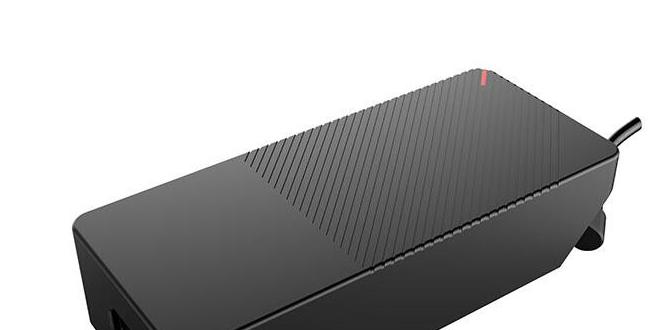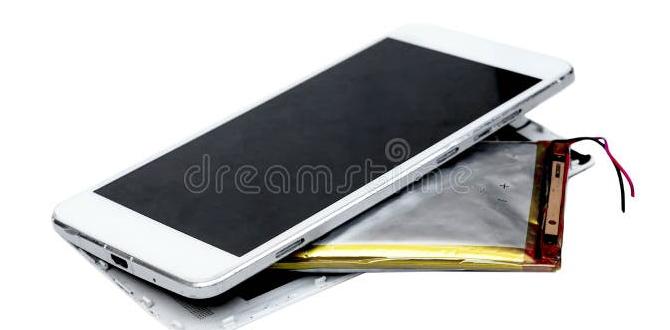Solar batteries for home cost can range from $6,000 to $15,000 or more, depending on size, brand, and installation. This guide breaks down the factors influencing prices, potential savings, and how to choose the right system for your budget.
Thinking about a solar battery for your home? It’s a smart move to capture the sun’s free energy and keep the lights on, even when the grid goes down. But when you start looking into it, the cost can seem a bit daunting. You might be wondering if it’s really worth the investment and how much you’ll actually need to plan for. Don’t worry, it’s not as complicated as it sounds!
I’m here to guide you through the world of solar battery costs, making it super easy to understand. We’ll cover everything from what makes one battery cost more than another to what you can do to make it fit your budget. By the end of this, you’ll feel confident about what to expect and how to get the best value for your home’s new power source.
Let’s dive in and uncover the true cost of solar batteries for your home, so you can make a well-informed decision about your energy future.
Understanding Solar Battery Costs for Your Home
When we talk about the “cost” of a solar battery for your home, it’s not just one simple price tag. Several things play a big role in how much you’ll end up paying. Think of it like buying a car – a basic model is different from one loaded with all the bells and whistles!
The core of the cost comes from the battery itself, but installation labor, any extra electrical work, and even brand reputation all add up. It’s important to get a clear picture of all these pieces so you’re not surprised later.
Let’s break down the main factors that influence the price of a solar battery system.
Key Factors Affecting Solar Battery Price
Several elements contribute to the final price of a solar battery system. Understanding these will help you assess quotes and make informed choices.
- Battery Capacity (kWh): This is the most significant factor. Capacity, measured in kilowatt-hours (kWh), tells you how much energy the battery can store. Larger homes or those with higher energy needs will require a bigger battery, which naturally costs more. A typical home might need a battery between 10 kWh and 15 kWh.
- Battery Chemistry: Most home solar batteries use lithium-ion technology, but there are different types of lithium-ion. Lithium-iron-phosphate (LiFePO4) is common, known for its safety and long lifespan, often leading to a slightly higher upfront cost but better long-term value.
- Brand and Manufacturer: Just like any product, some brands have a stronger reputation for quality, reliability, and customer service. Well-established brands like Tesla, LG, and Enphase often come with a premium price tag compared to newer or less established manufacturers.
- Inverter Type: Some solar battery systems require a specific type of inverter (which converts DC power from solar panels and batteries to AC power for your home). The cost of the inverter is often bundled into the battery system price.
- Installation Complexity: The ease or difficulty of installing the battery system at your home is a major labor cost. Factors like the location of your solar equipment, the type of electrical panel you have, and whether new wiring needs to be run can all affect installation time and cost.
- Additional Features: Features like advanced monitoring software, backup power capabilities during grid outages, and integration with smart home systems can also add to the overall cost.
- Warranty and Support: A longer or more comprehensive warranty period often indicates a higher-quality product and can influence the initial price, offering peace of mind.
Average Cost Breakdown
To give you a clearer picture, here’s an example of how the costs might break down for a typical home solar battery system. Remember, these are estimates and can vary significantly.
| Component | Estimated Cost Range (USD) | Notes |
|---|---|---|
| Battery Unit (10-15 kWh) | $5,000 – $10,000 | Primary cost based on capacity and brand. |
| Inverter (if separate or specialized) | $1,000 – $3,000 | Required for AC power conversion. |
| Installation Labor | $1,500 – $4,000 | Varies by complexity, installer rates, and location. |
| Permitting and Inspection Fees | $200 – $500 | Required by local authorities. |
| Other Materials (wiring, conduits, etc.) | $300 – $800 | Necessary for a safe and functional setup. |
| Total Estimated Cost | $8,000 – $18,300 | This is a broad range; actual quotes will be more specific. |
It’s always a good idea to get multiple quotes from different installers to compare prices and services. Don’t just go for the cheapest option; consider the reputation, warranties, and overall value.
Why Install a Solar Battery? The Benefits
While we’re focusing on cost, it’s essential to remember why people invest in solar batteries. The benefits often outweigh the initial expense over time.
- Energy Independence: Store excess solar power generated during the day for use at night or during cloudy periods. You’ll rely less on the utility grid.
- Backup Power: Keep your essential appliances running during power outages. This is a huge advantage for comfort and safety.
- Peak Shaving: In areas with time-of-use (TOU) electricity rates, you can use stored battery power during expensive peak hours, saving you money on your utility bill.
- Grid Services: Some utilities or third-party aggregators might pay you for allowing them to use your battery’s stored energy to help stabilize the grid during high demand.
- Increased Home Value: A solar battery system can make your home more attractive to buyers and potentially increase its market value.
Considering these benefits helps put the initial cost into perspective as an investment in reliability, savings, and sustainability.
Understanding Battery Capacity (kWh)
Let’s talk more about capacity, because it’s fundamental to the cost. The kilowatt-hour (kWh) rating of a battery indicates its energy storage capability. Think of it like the size of a water tank – a bigger tank holds more water.
For your home, the “right” size depends on:
- How much electricity your household uses daily.
- Which appliances you want to keep powered during an outage.
- How long you want those appliances to run on battery power.
A common starting point for many homes is a battery with a usable capacity around 10 kWh. This is usually enough to power essential circuits for several hours. If you want to power your whole house, including large appliances like air conditioning or electric ovens, you’ll likely need a larger, more expensive battery, perhaps 15 kWh, 20 kWh, or even more. This is why getting an energy audit of your home is crucial before you buy.
Battery Chemistry: What’s Inside Matters
The type of battery chemistry significantly impacts cost, performance, and safety. The most common for residential solar is lithium-ion, specifically:
- Lithium-ion Polymer (LiPo): Less common now for home storage due to cost and thermal management issues compared to other types.
- Lithium-ion Nickel Manganese Cobalt Oxide (NMC): Offers good energy density, meaning it can store a lot of power in a smaller space. It’s used in many electric vehicles and some home batteries.
- Lithium-iron-phosphate (LiFePO4 or LFP): This is becoming the gold standard for home solar batteries. LFP batteries are prized for their safety (less prone to thermal runaway), longer lifespan (more charge cycles), and stable performance. While sometimes having a slightly higher upfront cost, their durability often makes them more cost-effective over the battery’s lifetime.
When you get quotes, ask about the battery chemistry. For most homeowners, LiFePO4 offers the best balance of safety, longevity, and performance for the investment.
The Installation Process and Its Cost
The physical installation of a solar battery is where a significant portion of the cost lies after the battery unit itself. This involves skilled labor and ensuring everything is connected safely and correctly according to electrical codes.
A qualified solar installer will:
- Assess Your Home: They’ll look at your existing solar setup (if you have one), your electrical panel, and the best location for the battery.
- Permitting: Obtain necessary permits from your local city or county. This can take time and involves fees.
- Mounting the Battery: Securely install the battery unit, often on a wall in a garage, basement, or exterior.
- Wiring: Connect the battery to your solar inverter, your home’s electrical panel, and potentially the grid. This is a critical step.
- Inverter Setup: Configure or install the necessary inverters for the battery system.
- System Commissioning: Test the entire system to ensure it’s working correctly and safely.
- Inspection: Arrange for a final inspection by the local building department.
Installation costs can vary widely. Factors that increase installation costs include:
- Difficult Access: If the desired battery location is hard to reach for the installers.
- Extensive Wiring: If long runs of new wiring are needed or if your existing electrical panel is old and requires significant upgrades.
- Complex System Integration: Connecting to older or unusual electrical systems can take more time and expertise.
- Location: Labor rates differ significantly by region.
It’s crucial to choose an installer certified by the battery manufacturer and with good reviews. A poorly installed system can be dangerous and perform poorly. Reputable installers will provide a detailed quote that includes all labor and materials.
DIY vs. Professional Installation
For safety and performance reasons, it is highly recommended to have your solar battery system installed by a licensed and certified professional. Electrical systems, especially those involving high-voltage batteries and grid connections, can be dangerous. Improper installation can lead to:
- Electrical hazards and fire risks.
- Damage to the battery and solar system.
- Voided manufacturer warranties.
- Failure to pass safety inspections.
- Non-compliance with local building codes.
While some very technically inclined individuals with electrical experience might consider DIY, the risks and complexities involved make it impractical and unsafe for most homeowners. The cost of professional installation is an investment in safety, efficiency, and peace of mind. You can learn more about solar installation best practices from resources like the North American Board of Certified Energy Practitioners (NABCEP), which sets standards for solar professionals.
Financial Incentives and Rebates: Reducing the Cost
The upfront cost of a solar battery can be a hurdle, but there are often financial incentives, rebates, and tax credits available that can significantly lower the net cost. These programs are designed to encourage the adoption of renewable energy technologies.
- Federal Solar Investment Tax Credit (ITC): This is a major incentive. Currently, under the Inflation Reduction Act, you can claim 30% of the total cost of your solar energy system, including batteries, as a credit on your federal taxes. To qualify, the battery must be charged from your solar panels. This is a dollar-for-dollar reduction of your federal tax liability. You can find more details on the U.S. Department of Energy’s Federal Tax Credit for Solar Photovoltaics page.
- State and Local Rebates: Many states, cities, and even utility companies offer additional rebates or performance-based incentives for installing solar batteries. These can vary widely and change frequently, so it’s essential to research what’s available in your specific location. Programs often include rebates based on battery capacity (kWh) or specific performance goals.
- Utility Programs: Some utility companies have programs where they offer incentives for batteries that can help manage grid demand. This might include upfront rebates, or you might get credits on your bill for allowing the utility to draw power from your battery during peak times (often called “Virtual Power Plant” or VPP programs).
- Net Metering: While not directly reducing the battery cost, favorable net metering policies can increase the overall savings from your solar and battery system, making the investment more attractive.
When you’re getting quotes from installers, always ask them about available incentives. A good installer will be knowledgeable about these programs and help you navigate the application process.
Calculating Your Payback Period
The payback period is how long it takes for the savings (from reduced electricity bills and incentives) to equal the initial cost of your solar battery. This is a crucial calculation for understanding your return on investment.
Here’s a simplified way to think about it:
Payback Period = (Total System Cost – Incentives) / Annual Savings
Annual Savings can come from:
- Reduced electricity bills (using stored solar power instead of grid power, especially during peak times).
- Credits or payments from utility programs (e.g., VPPs).
- Avoided costs during power outages.
Example:
Let’s say a solar battery system costs $12,000. You qualify for a $3,600 federal tax credit (30%) and a $1,000 state rebate. Your net cost is $12,000 – $3,600 – $1,000 = $7,400.
If your annual savings from using the battery (peak shaving, self-consumption) are estimated at $1,200 per year, your payback period would be:
$7,400 / $1,200 per year = approximately 6.17 years.
This is a simplified calculation. Actual payback can be influenced by fluctuating electricity rates, system performance over time, and changes in incentive programs. Installers can often provide more detailed payback analysis tailored to your specific situation.
Choosing the Right Solar Battery for Your Needs and Budget
With all this information, how do you decide which battery is right for you? It’s a balance between your energy needs, your desired features, and what you can comfortably afford.
Step-by-Step Guide to Choosing
- Assess Your Energy Usage: Look at your past electricity bills to understand your average daily and monthly energy consumption (kWh). This is the most critical first step to sizing a battery correctly.
- Determine Your Goals: Why do you want a battery? Is it primarily for backup power during outages, reducing electricity bills by avoiding peak rates, or maximizing your solar energy self-consumption?
- Size Your Battery: Based on your usage and goals, determine the approximate capacity (kWh) you’ll need. A solar installer can help with sophisticated calculations. You can also find online solar battery sizing calculators. For backup power, consider the wattage of essential appliances you want to run simultaneously.
- Research Battery Brands and Models: Look into reputable brands known for quality and reliability. Compare their specifications, warranty terms, and battery chemistry (LiFePO4 is often recommended).
- Get Multiple Quotes: Contact at least three qualified solar installers. Ensure quotes are detailed, specifying the battery model and capacity, inverter type, warranty, and all labor/material costs.
- Understand the Warranty: Most solar batteries come with a warranty that covers a certain number of years or a specific amount of stored energy (e.g., 10 years or 80% of original capacity). A longer, more comprehensive warranty is usually better.
- Factor in Incentives: Ask installers about federal, state, and local incentives you might be eligible for. Make sure these are reflected in the net cost.
- Compare Total Value: Don’t just look at the price. Consider the brand reputation, warranty, installer experience, and projected savings over the lifespan of the battery.
Top Solar Battery Brands to Consider (Commonly Available)
While the market changes, some brands consistently offer reliable home solar battery solutions. It’s always good to check for the latest models.
- Tesla Powerwall: One of the most recognized names. Known for its sleek design, integrated inverter, and robust backup





